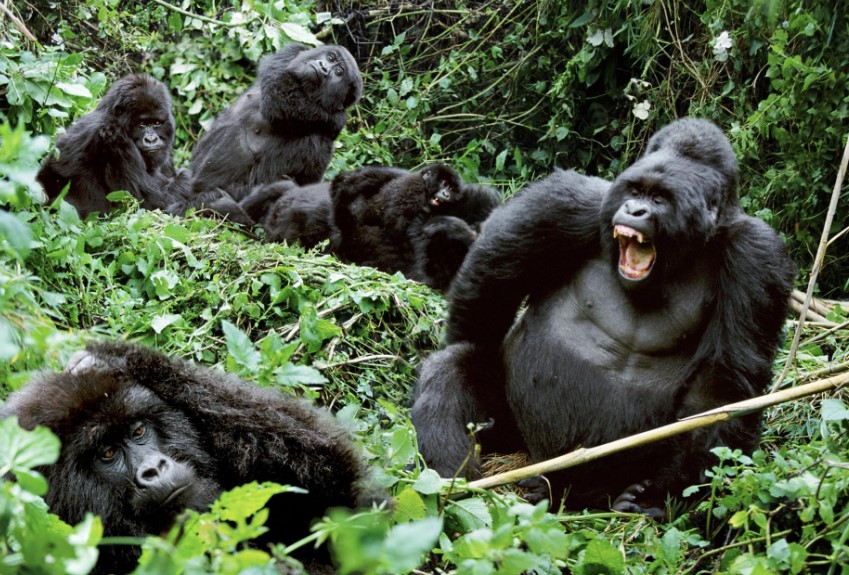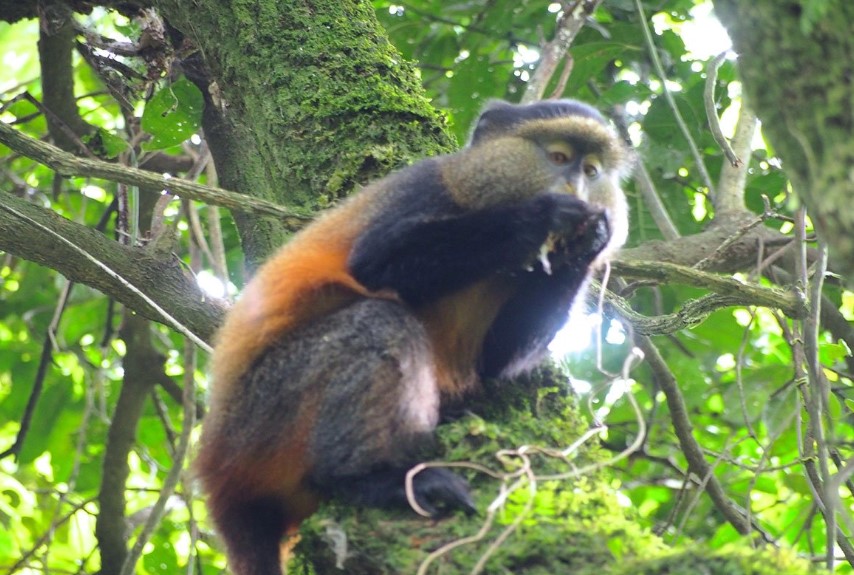Among the most captivating and fascinating creatures that inhabit Uganda are the Uganda primates, majestic mountain gorillas, the charismatic chimpanzees, and the delightful golden monkeys.
These primates, each unique in their own way, play a crucial role in Uganda’s conservation efforts and attract tourists from around the world. In this article, we will explore the captivating world of these majestic animals, their habitats, behavior, and the conservation efforts aimed at protecting them.
Gorillas
Uganda boasts the privilege of being one of the few places on Earth where the critically endangered mountain gorillas can be found. The Bwindi Impenetrable National Park and Mgahinga Gorilla National Park serve as sanctuaries for these gentle giants. With only around 1,000 mountain gorillas remaining globally, Uganda’s commitment to their preservation is commendable.
Visitors to these parks have the rare opportunity to embark on gorilla trekking expeditions, where they can witness these magnificent creatures in their natural habitat. The experience of encountering a silverback gorilla and observing their social dynamics is an indescribable moment of awe and connection with nature.
Chimpanzees
Chimpanzees, our closest living relatives, also find their home in Uganda’s lush rainforests. Kibale National Park, Budongo Forest, and Kyambura Gorge are prominent locations where chimpanzee tracking and habituation experiences take place. Known for their remarkable intelligence and social behavior, observing these primates is a thrilling adventure.
Chimpanzee communities exhibit complex social structures, tool usage, and a wide range of vocalizations, providing scientists with valuable insights into human evolution. Encounters with chimpanzees in the wild offer a profound appreciation for the connections we share with these incredible creatures.
Golden Monkeys
Lesser-known but equally captivating, the golden monkeys are an endemic species found in the Virunga Mountains, which extend across Uganda, Rwanda, and the Democratic Republic of the Congo. The golden fur that adorns their bodies distinguishes them from other primate species. Tracking these playful and acrobatic creatures is a unique experience.
Visitors can witness their energetic leaps through the bamboo forests and enjoy their characteristic calls reverberating through the mountains. With their limited distribution, the conservation of golden monkeys becomes all the more crucial.
Best Time to Track Gorillas, Chimpanzees, and Golden Monkeys
When planning an unforgettable primate adventure in Uganda, understanding the best time to track these magnificent creatures becomes crucial. Factors such as weather conditions, accessibility, and primate behavior all play a role in determining the optimal time to witness these primates in their natural habitats.
Mountain Gorillas.
To ensure a successful and memorable gorilla tracking experience, timing is crucial.
Dry Season
The dry season, which runs from June to August and December to February, is widely regarded as the best time to track mountain gorillas. The weather is relatively mild, with clear skies and fewer chances of rain.
The dry trails make trekking through the dense forest more manageable, reducing the risk of slips and falls. Moreover, the gorillas tend to congregate around lower altitudes during this period, making them more accessible to visitors.
Wet Season
While the wet season (March to May and September to November) brings occasional showers and increased humidity, it also offers its own unique advantages. The forest comes alive with lush greenery, and the gorilla habitats are brimming with an abundance of food, leading to spectacular sightings.
It is worth noting that tracking during the wet season requires more physical effort, as the trails can become muddy and slippery. However, for those seeking a more adventurous experience and willing to embrace the rain, the wet season can be equally rewarding.
Chimpanzees
To maximize your chances of encountering these intelligent creatures, timing your visit is crucial.
Dry Season
Similar to gorilla tracking, the dry season is preferable for chimpanzee tracking. The months of June to August and December to February offer drier weather, making trekking more comfortable. During this period, the chimps are more active, often engaging in playful antics and vocal displays, enhancing the overall experience.
Wet Season
Contrary to gorilla tracking, chimpanzee tracking during the wet season (March to May and September to November) can be highly rewarding. The forest is transformed into a verdant wonderland, and the rainforest’s ambiance amplifies the beauty of the surroundings.
Although trails may be slippery, the wet season brings a vibrant burst of life, with the forest resonating with bird songs and the calls of various other primates. Witnessing the chimpanzees in such a thriving ecosystem offers a unique perspective on their behavior and interactions.
Golden Monkeys
To make the most of your golden monkey trekking experience, consider the following:
Dry Season
The dry season from June to August and December to February is the recommended time to track golden monkeys. During this period, the weather is generally pleasant, and the monkeys are more active and easier to spot as they move through the bamboo forests in search of food. The golden monkeys’ striking colors contrasting against the lush green backdrop create a mesmerizing sight for visitors.
Conservation Efforts
Uganda has made significant strides in primate conservation. The government, in collaboration with local communities and international organizations, has implemented various initiatives to protect and sustainably manage primate habitats.
Strict regulations on tourism activities, including gorilla trekking permits and limited visitor numbers, help minimize disturbance to these sensitive ecosystems. Community-based conservation projects provide incentives for local communities to actively participate in protecting primate populations, thereby fostering a harmonious relationship between humans and wildlife.
In Conclusion, Gorillas, chimpanzees, and golden monkeys are charismatic ambassadors of Uganda’s natural heritage. Their existence is a testament to the country’s commitment to conservation and sustainable tourism.
Encountering these incredible primates in their natural environment is a life-changing experience, fostering a deeper appreciation for the delicate balance of ecosystems and the urgent need to protect them. As Uganda continues to prioritize primate conservation, it ensures that future generations can revel in the majesty and wonder of these remarkable creatures that grace its landscapes.




Comment (0)